
 This is a remarkable book. I was hoping to have it in the last issue, but it took me a lot longer to read that I expected. There are two main reasons for that. But before I get to them, a quick introduction.
This is a remarkable book. I was hoping to have it in the last issue, but it took me a lot longer to read that I expected. There are two main reasons for that. But before I get to them, a quick introduction.
Hao Jingfang is one of the rising stars of Chinese science fiction. Her novelette, “Folding Beijing”, made her the fist Chinese woman to win a Hugo Award. Also she has a PhD in macroeconomics, so she has a good understanding of how modern societies are constructed. The book is masterfully translated by Ken Liu.
I found the book a very slow read. It reminded me a lot of Liu Cixin’s The Three Body Problem, which I didn’t finish. In part both books felt very Asimov-like, and maybe Chinese SF is still working its way out of the need to write in that sort of explanatory, giving-you-a-science-lesson style. However, I think there is more to it than that. What I found myself missing was a sense of foreshadowing.
By that I don’t mean the obvious stuff, where a character has a thought and the author adds, “but she would soon find out how wrong she was.” I mean that I didn’t have any sense of where the story was going, or what I should look forward to by way of a climax. I got a vague idea at the beginning, and that turned out to be right in the end, but in the meantime the book was all over the place. I am now wondering if this is a feature of Chinese fiction.
An analogy might help. Typically Western fiction is like a portrait. There are one or more central characters (or themes) and you know you should be focusing on them. Vagabonds felt more like a landscape with no obvious focal point. You are supposed to look at all of it, because there are lots of interesting things to see, but no one thing is central.
I may be totally off base here, of course. Ken, Regina, if you happen to read this, please tell me if I am talking nonsense.
The other reason that the book took me so long to read is that there is a whole lot to think about. Here is the basic set up.
We are in a new-future world and there is a colony on Mars. Some years ago the colony rebelled against Earth control and declared independence. There was a war, which the Martians won primarily because it was too expensive for Earth to fight so far from home. Now that the heroes of that war are old men, it is time for the two planets to try to come together again.
As part of the diplomatic effort, a group of young Martians, chosen from the brightest of their age group, are sent to Earth to study. In a nod to times past, they are called the Mercury Group. Now they are on their way home, and they are having to face re-integrating back into Martian society after several years on a very different planet.
The Earth of the novel is very much our world writ large. It is given over entirely to rapacious capitalism. Everything is driven by marketing. Everyone is an individual, free to do whatever they like, provided that they have the money to do so, and can make more money by doing it.
Mars is very different. The atmosphere is not breathable, so everyone lives in a single, large city, made mostly from glass because sand is one resource that Mars has in abundance. Many things are communally owned. Everyone has a place in society, and is trained to take up that place as soon as they have shown what social need they are best capable of fulfilling.
If you haven’t seen it yet, let me explain. Vagabonds is in direct conversation with The Dispossessed, widely touted as one of the best science fiction novels ever written. That is a staggeringly ambitious thing to do for a debut, but Hao makes a very creditable stab at it.
There is more to it as well. Le Guin was mostly writing about conversations between two opposing political philosophies within America. With Vagabonds it is hard not to see the book as being about the USA and China. It isn’t, of course, because China is not vulnerable and resource-constrained in the way that Mars is. However, Hao has the advantage of having lived in a planned economy, and has the academic skills to back up what she is doing. I can see lots of academic papers being written about this book.
The problem for our heroes is that they have now tasted the freedom of Earth. Mars, on their return, suddenly feels horribly repressive. Being students, their thoughts turn to revolution. This is complicated by the fact that our main viewpoint character, Luoying, is the granddaughter of Hans Sloan, the man who has been First Consul since the War of Independence, and is known on Earth as the Dictator of Mars.
She looked up at him, her eyes glistening. “The problem isn’t whether things are good here but that you can’t think it’s not good here.”
There’s just so much to think about in this book. I have a whole pile of quotes bookmarked and not enough space in a simple review to talk around them all. It isn’t always easy to understand the points that Hao is making either. I got the impression as I went through the book that I would not understand it properly without some grounding in Confucianism and Buddhism, which have very different modes of philosophical thought to what we are used to from Classical Athens.
There’s one final point that I want to make. Hao uses the Mercury group in her novel because they are people who have experienced both Terran and Martian society. Almost uniquely they are able to compare and contrast the two. But this puts them in a very difficult situation.
Luoying and her friends were fated never to return home. The ship they were on was forever vacillating on the Lagrangian point between the two worlds. To vacillate was also never to belong. It was their fate to be cosmic vagabonds.
That’s a metaphorical ship, of course. What Hao means is that having seen both societies, Luoying and her friends no longer feel at home in either. The only “home” they have is each other, people who share the same life experience.
This brings me to a new series of online talks being put on by the folks who produced FutureCon. They will, I think, be monthly, and the first one focused on pan-American SF beyond the USA. One of the panellists was Alejandra Decurgez from Argentina. She’s a psychologist in her day job, and she said a lot of interesting things. At one point she started talking about how our sense of community is very different in these days of global pandemic. Our group of friends is no longer the people we see daily in our local geographic spaces, or at work, but the group of individuals that we interact with regularly online. Typically we choose these friends because they share similar values to us, and those values may be very different from those of the nation states in which we live. In a very real way, we are all becoming Hao’s vagabonds.
 Title:
Title: Vagabonds
By: Hao JingfangTranslator: Ken Liu
Publisher: Head of Zeus
Purchase links:Amazon UKAmazon USBookshop.org UKSee
here for information about buying books though
Salon Futura

 This issue’s cover is once again by Steffan Keller, so clearly I have an attraction to his work. The image I have chosen caught my eye as I was browsing Pixabay because I have been researching Medusa for something I’m doing with Dan Vo next week. I can’t say anything much about that yet, but doubtless it will all appear in due course.
This issue’s cover is once again by Steffan Keller, so clearly I have an attraction to his work. The image I have chosen caught my eye as I was browsing Pixabay because I have been researching Medusa for something I’m doing with Dan Vo next week. I can’t say anything much about that yet, but doubtless it will all appear in due course.

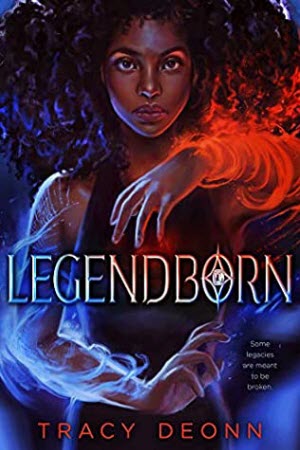 Arthuriana is something of a Vegemite subgenre. I know lots of people who absolutely loathe it. I, however, have Welsh parents, and was born just a few miles from Glastonbury. Arthur is in my blood, and I am a total sucker for new attempts to reinvent the genre.
Arthuriana is something of a Vegemite subgenre. I know lots of people who absolutely loathe it. I, however, have Welsh parents, and was born just a few miles from Glastonbury. Arthur is in my blood, and I am a total sucker for new attempts to reinvent the genre.

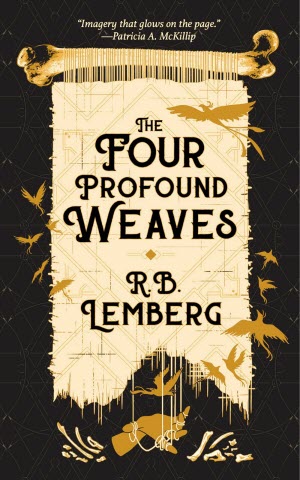 I’m always a little nervous approaching books centring trans characters that everyone else raves about. Of course I shouldn’t have been worried about RB Lemberg. They know what they are doing. But I was pleasantly surprised that there was so much more to The Four Profound Weaves than the trans elements.
I’m always a little nervous approaching books centring trans characters that everyone else raves about. Of course I shouldn’t have been worried about RB Lemberg. They know what they are doing. But I was pleasantly surprised that there was so much more to The Four Profound Weaves than the trans elements.

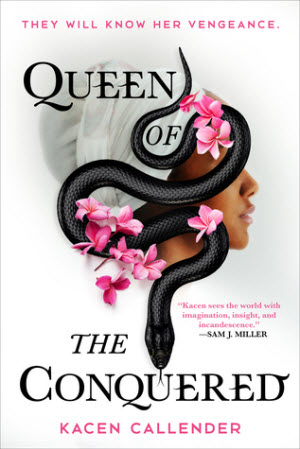 Among many remarkable things that happened in 2020, the World Fantasy Award for Best Novel was won by a YA book written by a non-binary person. That book was Queen of the Conquered, by Kacen Callender. It is a book I have been meaning to get to for some time, and it is indeed excellent. Callender looks like they will have a fine career ahead of them. I’d like you to take that as a given, dear reader, because I’m going to be slightly critical and I don’t want you to think that I didn’t like the book.
Among many remarkable things that happened in 2020, the World Fantasy Award for Best Novel was won by a YA book written by a non-binary person. That book was Queen of the Conquered, by Kacen Callender. It is a book I have been meaning to get to for some time, and it is indeed excellent. Callender looks like they will have a fine career ahead of them. I’d like you to take that as a given, dear reader, because I’m going to be slightly critical and I don’t want you to think that I didn’t like the book.

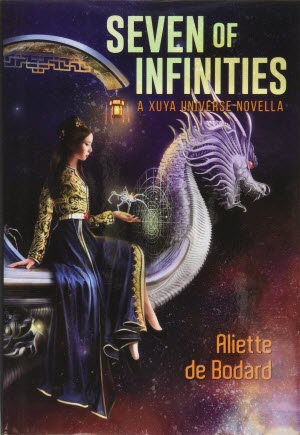 One of the things I enjoy most about reviewing books is seeing writers grow and blossom as their career develops. I have always enjoyed Aliette de Bodard’s work, but I have also seen her craft improve, year by year. As far as I’m concerned, Seven of Infinities is her best work to date.
One of the things I enjoy most about reviewing books is seeing writers grow and blossom as their career develops. I have always enjoyed Aliette de Bodard’s work, but I have also seen her craft improve, year by year. As far as I’m concerned, Seven of Infinities is her best work to date.

 Lagoon is my favourite book by Nnedi Okorafor, so I was excited to find that her latest work is also set in Africa. Remote Control isn’t nearly as funny, but it is fascinating all the same.
Lagoon is my favourite book by Nnedi Okorafor, so I was excited to find that her latest work is also set in Africa. Remote Control isn’t nearly as funny, but it is fascinating all the same.

 It was announced in advance that this would be the last season of Agents of SHIELD. Maybe the creative team wanted to try new things. Maybe there are so many new Marvel TV series lined up that they needed to re-deploy staff. Or maybe they had run out of ideas for bringing Phil Coulson back from the dead.
It was announced in advance that this would be the last season of Agents of SHIELD. Maybe the creative team wanted to try new things. Maybe there are so many new Marvel TV series lined up that they needed to re-deploy staff. Or maybe they had run out of ideas for bringing Phil Coulson back from the dead.
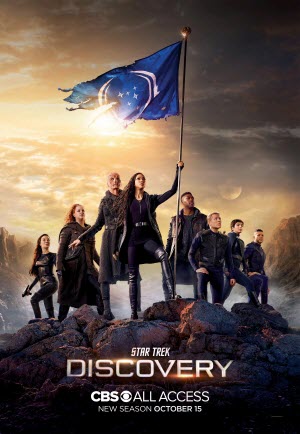 I think that Discovery may have found its feet at last. I have enjoyed the previous two seasons, but the idea of setting it prior to The Original Series was wildly risky and the Young Spock thing didn’t work as well as they had hoped it would. As part of Star Trek, the series didn’t make much sense. Sending Burnham and the crew into the 32nd Century gives them freedom to tell new stories without being too much beholden to What Has Gone Before.
I think that Discovery may have found its feet at last. I have enjoyed the previous two seasons, but the idea of setting it prior to The Original Series was wildly risky and the Young Spock thing didn’t work as well as they had hoped it would. As part of Star Trek, the series didn’t make much sense. Sending Burnham and the crew into the 32nd Century gives them freedom to tell new stories without being too much beholden to What Has Gone Before.
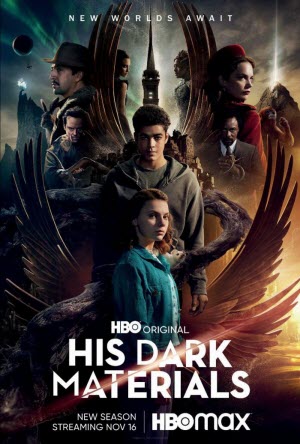 I saved the second season of His Dark Materials to watch over the holiday period and am glad I did. I would have got very itchy having to wait a week for each new episode. I’m pleased to say that it continues to hold my attention.
I saved the second season of His Dark Materials to watch over the holiday period and am glad I did. I would have got very itchy having to wait a week for each new episode. I’m pleased to say that it continues to hold my attention.
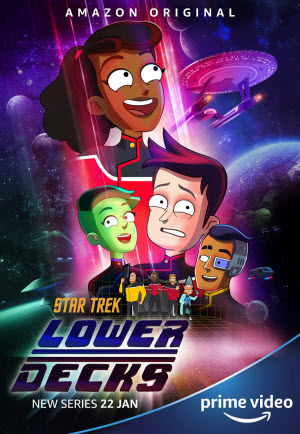 Those of you in the USA will already have had plenty of time to enjoy this animated Star Trek spinoff. For us in the UK it has only just arrived, being available on Amazon Prime. Having heard a lot of hype about the series, I binged on it immediately.
Those of you in the USA will already have had plenty of time to enjoy this animated Star Trek spinoff. For us in the UK it has only just arrived, being available on Amazon Prime. Having heard a lot of hype about the series, I binged on it immediately.

 This is the December 2020 issue of Salon Futura. Here are the contents.
This is the December 2020 issue of Salon Futura. Here are the contents. Blackthorn Winter
Blackthorn Winter The Once and Future Witches
The Once and Future Witches When the Tiger Came Down the Mountain
When the Tiger Came Down the Mountain The Left-Handed Booksellers of London
The Left-Handed Booksellers of London The Doors of Sleep
The Doors of Sleep Last Stand in Lychford
Last Stand in Lychford Miracles of Our Own Making
Miracles of Our Own Making Merry Happy Valkyrie
Merry Happy Valkyrie The Mandalorian – Season #2
The Mandalorian – Season #2 SMOFcon 37¼
SMOFcon 37¼ Editorial – December 2020
Editorial – December 2020 Given that this issue covers the winter holiday period in the Northern Hemisphere, I figured I should have something suitably wintry and fantastical for the cover. This is another image
Given that this issue covers the winter holiday period in the Northern Hemisphere, I figured I should have something suitably wintry and fantastical for the cover. This is another image 
 Comet Weather is one of my absolute favourite books of 2020, so when I discovered that NewCon Press was making the sequel available early I jumped at the opportunity to get hold of a copy. Officially the book isn’t out until next spring, but as it is set around the Christmas / New Year period, and he had copies available, Ian Whates decided to put it on sale.
Comet Weather is one of my absolute favourite books of 2020, so when I discovered that NewCon Press was making the sequel available early I jumped at the opportunity to get hold of a copy. Officially the book isn’t out until next spring, but as it is set around the Christmas / New Year period, and he had copies available, Ian Whates decided to put it on sale. 
 This one shouldn’t need any introduction. Alix Harrow’s follow-up to The Ten Thousand Doors of January has already been praised to the skies by many other critics. I can see why too. The Once and Future Witches is an engaging tale that mixes feminism, fairy tales and American history in an imaginative way. I expect to see this book on some award shortlists next year.
This one shouldn’t need any introduction. Alix Harrow’s follow-up to The Ten Thousand Doors of January has already been praised to the skies by many other critics. I can see why too. The Once and Future Witches is an engaging tale that mixes feminism, fairy tales and American history in an imaginative way. I expect to see this book on some award shortlists next year.
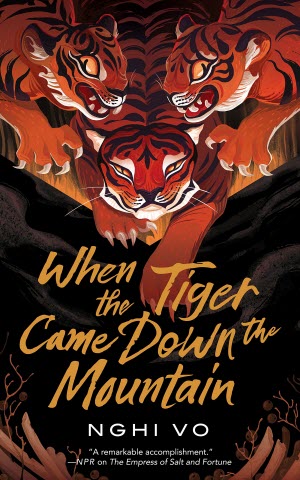 I loved The Empress of Salt and Fortune so much that on finishing it I immediately put Nghi Vo’s next book on pre-order. When the Tiger Came Down the Mountain is another book about the monk Chih from the Singing Hills monastery. It takes a very different approach to the first book, but is no less loveable.
I loved The Empress of Salt and Fortune so much that on finishing it I immediately put Nghi Vo’s next book on pre-order. When the Tiger Came Down the Mountain is another book about the monk Chih from the Singing Hills monastery. It takes a very different approach to the first book, but is no less loveable.
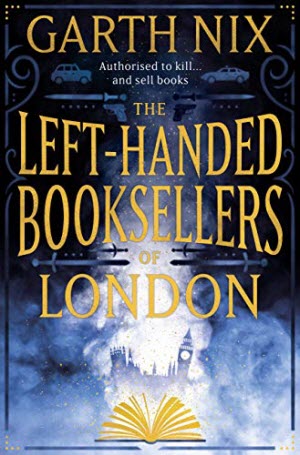 I first reviewed Garth Nix back in 1996 after Sabriel won the Aurealis award for Best Fantasy Novel in both the Children and Adult categories. It quickly became clear that Nix did not really need me, and I would be better off reviewing those Aussie writers who had not yet broken out to an international audience. Also he was writing a lot of books in the same world, and that makes it hard to keep up. However, he has remained a friend and I try to catch up with him when he’s in the UK. When I saw that he’d produced a new book in an entirely different world, with a rather intriguing title, I decided to give it a go.
I first reviewed Garth Nix back in 1996 after Sabriel won the Aurealis award for Best Fantasy Novel in both the Children and Adult categories. It quickly became clear that Nix did not really need me, and I would be better off reviewing those Aussie writers who had not yet broken out to an international audience. Also he was writing a lot of books in the same world, and that makes it hard to keep up. However, he has remained a friend and I try to catch up with him when he’s in the UK. When I saw that he’d produced a new book in an entirely different world, with a rather intriguing title, I decided to give it a go.
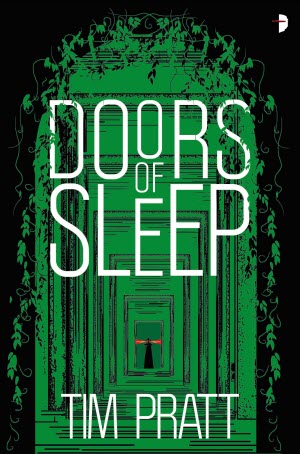 Angry Robot sent me an eARC of this one because I loved Tim Pratt’s Axiom series so much. I guess I should start by saying that The Doors of Sleep is nothing like the Axiom series. It is, however, fascinating. Let me explain.
Angry Robot sent me an eARC of this one because I loved Tim Pratt’s Axiom series so much. I guess I should start by saying that The Doors of Sleep is nothing like the Axiom series. It is, however, fascinating. Let me explain.
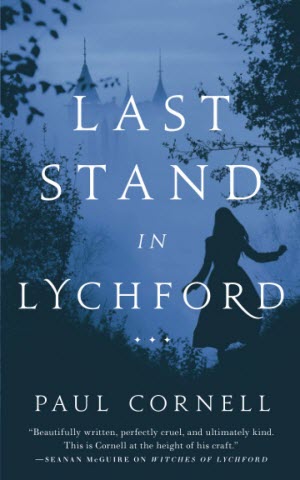 One of the few silver linings to the whole dreadful drift of the UK into a far-right dystopia has been the attempts by creative people to try to understand how it happened. Mike Harrison’s The Sunken Land Begins to Rise Again is one such attempt, but another that has received rather less critical attention is Paul Cornell’s Witches of Lychford novellas.
One of the few silver linings to the whole dreadful drift of the UK into a far-right dystopia has been the attempts by creative people to try to understand how it happened. Mike Harrison’s The Sunken Land Begins to Rise Again is one such attempt, but another that has received rather less critical attention is Paul Cornell’s Witches of Lychford novellas.
 Having read Blackthorn Winter and been completely blindsided by bits of occult history I was unaware of, I figured that it was time to finally get on with reading Liz Williams’ history of British paganism. Miracles of Our Own Making is an ambitious project, tracing the history of pagan belief in these isles from pre-Roman times to the present day. Fortunately Williams has plenty of good previous research to draw on, in particular the excellent work of Ronald Hutton.
Having read Blackthorn Winter and been completely blindsided by bits of occult history I was unaware of, I figured that it was time to finally get on with reading Liz Williams’ history of British paganism. Miracles of Our Own Making is an ambitious project, tracing the history of pagan belief in these isles from pre-Roman times to the present day. Fortunately Williams has plenty of good previous research to draw on, in particular the excellent work of Ronald Hutton.
 As I have two Christmas-related books in this issue already, I figured that I could go the whole hog and add a third. This isn’t a new book. It is two years old, and my apologies to Tansy Rayner Roberts for taking so long to get round to it. My excuse is that you can only read it at Christmas.
As I have two Christmas-related books in this issue already, I figured that I could go the whole hog and add a third. This isn’t a new book. It is two years old, and my apologies to Tansy Rayner Roberts for taking so long to get round to it. My excuse is that you can only read it at Christmas.
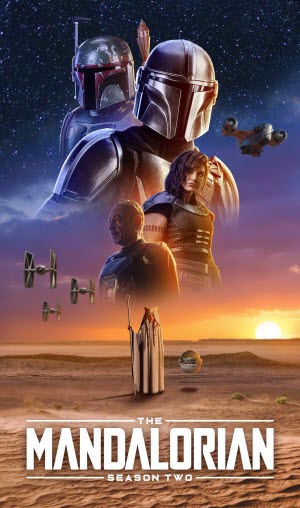 Well, that was a thing. On the one hand it was enjoyable mind candy. It clearly made an awful lot of Star Wars fans very happy. But as science fiction TV? Meh.
Well, that was a thing. On the one hand it was enjoyable mind candy. It clearly made an awful lot of Star Wars fans very happy. But as science fiction TV? Meh. Like everything else this year, SMOFcon got hit by COVID-19 and went virtual. And because SMOFcon is very much about getting people together, it had to re-invent itself somewhat. The result was a cut down version known as SMOFcon 37¼ to its friends, and 37.25 to Microsoft Windows.
Like everything else this year, SMOFcon got hit by COVID-19 and went virtual. And because SMOFcon is very much about getting people together, it had to re-invent itself somewhat. The result was a cut down version known as SMOFcon 37¼ to its friends, and 37.25 to Microsoft Windows.
 This is the November 2020 issue of Salon Futura. Here are the contents.
This is the November 2020 issue of Salon Futura. Here are the contents. Black Sun
Black Sun Freshwater
Freshwater Hav
Hav World Fantasy 2020
World Fantasy 2020 DALEKS
DALEKS FIYAHcon Revisited
FIYAHcon Revisited SHIELD – Season Six
SHIELD – Season Six Better late than never, this issue’s cover is from the Aleksandar Žiljak fantasy collection,
Better late than never, this issue’s cover is from the Aleksandar Žiljak fantasy collection, 
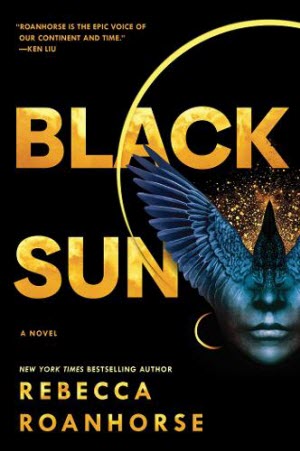 It is epic fantasy, Jim, but not as we know it.
It is epic fantasy, Jim, but not as we know it. Let’s get the headlines out of the way first. Freshwater was the winner of the Otherwise (formerly Tiptree) Award this year. It was also longlisted for a couple of UK-based literary awards: the Wellcome Book Prize and the Women’s Prize for Fiction. The latter may have been rescinded now that the people running that prize have gone full-on transphobic. So this is a book that is accepted by both genre and literary communities, and is being praised by both.
Let’s get the headlines out of the way first. Freshwater was the winner of the Otherwise (formerly Tiptree) Award this year. It was also longlisted for a couple of UK-based literary awards: the Wellcome Book Prize and the Women’s Prize for Fiction. The latter may have been rescinded now that the people running that prize have gone full-on transphobic. So this is a book that is accepted by both genre and literary communities, and is being praised by both. This review was originally published in issue #133 of Emerald City, dated September 2006. It is reprinted here to mark the death earlier this month of Jan Morris, at the magnificent age of 94.
This review was originally published in issue #133 of Emerald City, dated September 2006. It is reprinted here to mark the death earlier this month of Jan Morris, at the magnificent age of 94. I ended up doing three programme items at this year’s World Fantasy. That’s quite an exceptional thing for a convention that normally has a one-panel-per-person rule, but this year was unusual. The need to go virtual had led to both more panels and fewer potential panellists. I was happy to help out.
I ended up doing three programme items at this year’s World Fantasy. That’s quite an exceptional thing for a convention that normally has a one-panel-per-person rule, but this year was unusual. The need to go virtual had led to both more panels and fewer potential panellists. I was happy to help out.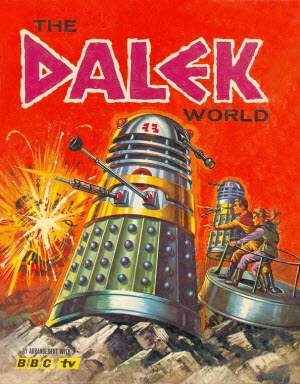 Many years ago, when the Doctor was an old man with a granddaughter rather than a handsome young buck, or a sassy woman, the Daleks were, well, Daleks. Us children loved them. We’d wander around the school playground with our arms stuck out stiffly yelling “EXTERMINATE! EXTERMINATE!!!” for all our little lungs were worth. This did not go unnoticed by people whose job it was to tell stories for money.
Many years ago, when the Doctor was an old man with a granddaughter rather than a handsome young buck, or a sassy woman, the Daleks were, well, Daleks. Us children loved them. We’d wander around the school playground with our arms stuck out stiffly yelling “EXTERMINATE! EXTERMINATE!!!” for all our little lungs were worth. This did not go unnoticed by people whose job it was to tell stories for money. Shortly after the last issue went live, LD Lewis posted a
Shortly after the last issue went live, LD Lewis posted a  While catching up on The Mandalorian I noticed that season six of Agents of SHIELD was available on Disney, and season seven has now started. It can be a silly show, but after five seasons I had some affection for the characters so I decided to give it a try. I’m glad I did.
While catching up on The Mandalorian I noticed that season six of Agents of SHIELD was available on Disney, and season seven has now started. It can be a silly show, but after five seasons I had some affection for the characters so I decided to give it a try. I’m glad I did.
 This is the October 2020 issue of Salon Futura. Here are the contents.
This is the October 2020 issue of Salon Futura. Here are the contents. Vagabonds
Vagabonds Machine
Machine Lovecraft Country
Lovecraft Country Ring Shout
Ring Shout The First Sister
The First Sister Octocon
Octocon Seven Devils
Seven Devils I was going to use the cover of
I was going to use the cover of  This is a remarkable book. I was hoping to have it in the last issue, but it took me a lot longer to read that I expected. There are two main reasons for that. But before I get to them, a quick introduction.
This is a remarkable book. I was hoping to have it in the last issue, but it took me a lot longer to read that I expected. There are two main reasons for that. But before I get to them, a quick introduction.
 Somewhat to my surprise, Machine is Elizabeth Bear’s thirty-second novel. It shows. This is a second book in her White Space series of space opera books, and it is very assured. There is some possibility that the White Space series is named, in part, for the Sector General books of the legendary James White, and this book introduces us to Bear’s future hospital.
Somewhat to my surprise, Machine is Elizabeth Bear’s thirty-second novel. It shows. This is a second book in her White Space series of space opera books, and it is very assured. There is some possibility that the White Space series is named, in part, for the Sector General books of the legendary James White, and this book introduces us to Bear’s future hospital.
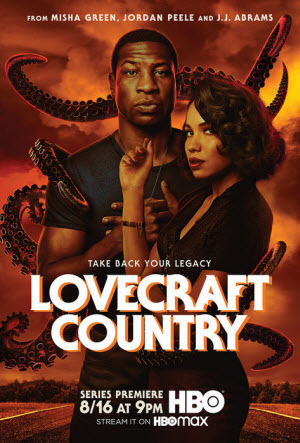 Well, that was interesting. Normally I don’t watch horror on TV. Lovecraft Country was very clearly filmed as horror, but mostly seemed more silly than scary. That, of course, is in no small part due to the fact that trying to represent the unspeakably horrible on screen is always doomed to failure. When we throw in the fact that this is Lovecraft we are talking about, and what he was terrified of was particularly weird, well you have no chance.
Well, that was interesting. Normally I don’t watch horror on TV. Lovecraft Country was very clearly filmed as horror, but mostly seemed more silly than scary. That, of course, is in no small part due to the fact that trying to represent the unspeakably horrible on screen is always doomed to failure. When we throw in the fact that this is Lovecraft we are talking about, and what he was terrified of was particularly weird, well you have no chance.  It is entirely true that Phenderson Djèlí Clark is one of my favourite writers right now. I have loved everything he has done to date, and Ring Shout does not disappoint.
It is entirely true that Phenderson Djèlí Clark is one of my favourite writers right now. I have loved everything he has done to date, and Ring Shout does not disappoint.